This model represents the Hawk III flown by Maj. Kao Chi-hang, as it would have appeared in July of 1937.
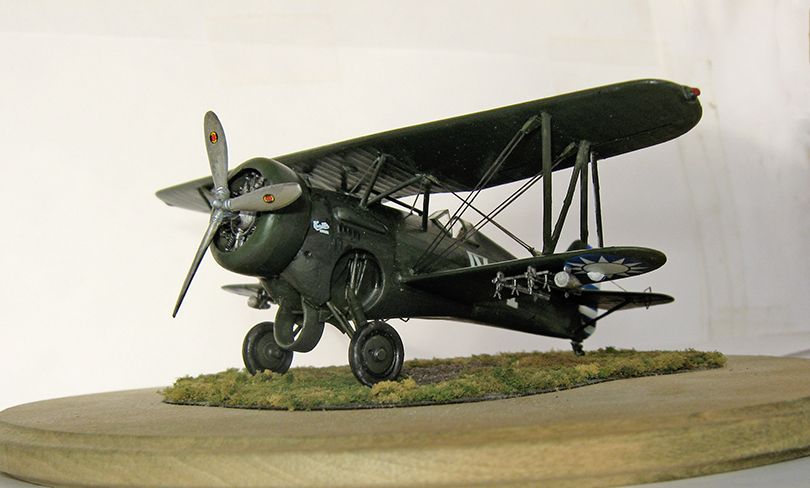
Kao Chi-hang was at that time a very experienced pilot. He had come up through the military service of the great Manchurian war lord, Marshall Chang Tso-lin. Kao Chi-hang was the eldest son of a well-to-do Catholic family in Fengtien province, and attended a French Catholic high school in Mukden. He was accepted as an artillery cadet on graduation, but decided on a military flying career. After being turned down initially, he wrote in French directly to the son of 'The Old Marshall', Chang Hsiueh-liang, among whose titles was Commandant of the Aviation Bureau.
That worthy was sufficiently impressed with Kao's language and audacity that he saw to the young man's being selected as one of a group of cadets being sent to France to learn to fly. These were trained extensively at the schools of the Morane and Caudron firms, and returned to Manchuria in 1927. Kao Chi-hang was then assigned to the 'Eagle' squadron. What Kao flew in that squadron cannot be known (equipment was extremely mixed) nor can it be said for sure whether Kao saw service against the National Revolutionary Army of Gen. Chiang Kai-shek during the final years of the Northern Expedition.
When the 'Old Marshall' was assassinated by the Japanese, and his son Chang Hsiueh-liang gave loyalty to the Nationalist party in 1929, Kao Chi-hang became a flight instructor at Mukden, doing so in company for a while with several Japanese Army fliers. When the Japanese occupied Mukden in September, 1931, Kao disguised himself and made his way south. He joined the air service of the Nanking government, and became a flight instructor at the Central Aviation School at Hangchow, working with American fliers led by Col. Jouett. In 1934, Kao was a member of a Chinese delegation sent to Italy to examine Italian aircraft offered for sale to China, after Mussolini declared the Nanking government need no longer pay indemnities dating from the Boxer Rebellion. In 1936, Kao Chi-hang had the rank of Major, and was commander of the 4th Pursuit Group, whose three squadrons were newly equipped with the 'New Hawk' Curtiss Hawk III.
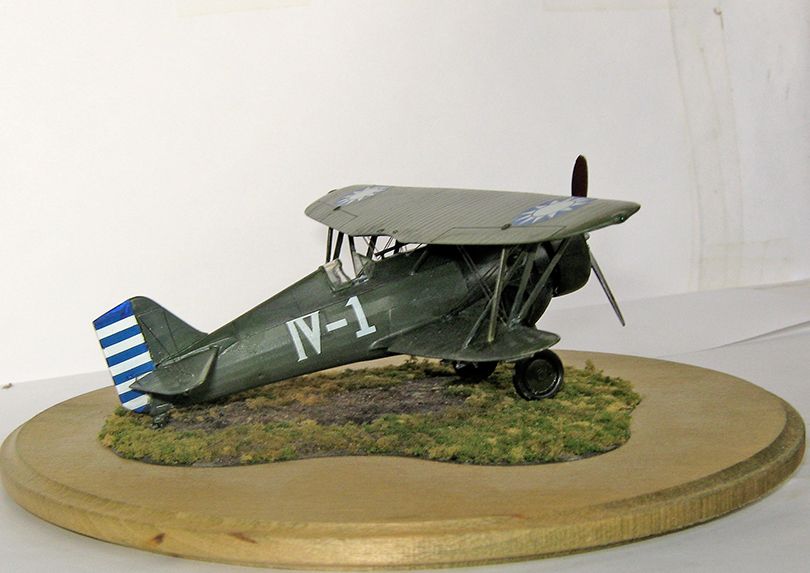
With the Japanese closing in on Peking at the end of July, the 4th Pursuit Group was sent north from Hangchow to Chow Chia Kou, in the east of Honan Province. When on August 9 a Japanese Navy officer at Shanghai was killed for refusing to leave the environs of a Chinese aerodrome, Gen. Chiang Kai-shek resolved to begin offensive operations, but at Shanghai in the Yangtze valley, not in the north. Maj. Kao was summoned to Nanking for a commanders conference; on August 14 the Chinese air force was to go into action at Shanghai. Maj. Kao was flown to the 4th Pursuit Group's base at Hangchow, not far from Nanking, and the group's squadrons flew there direct from Chow Chia Kou.
The Japanese had also decided to commence aerial operations, at Shanghai and in the Chinese interior, on the 14th of August. Typhoon conditions off the coast prevented Japanese carriers from launching planned attacks, but the long-range G3M Navy bombers based on Formosa, fast twin-engine, twin-rudder machines, were able to take off, though the weather played hob with their navigation and formations.
Two squadrons of the 4th Pursuit had landed at Hangchow, low on fuel, when warning came Japanese bombers were approaching, flying low under the clouds. Machines were hurriedly fueled and took off to engage. Amid the bustle Maj. Kao's IV-1, flown down by a ferry pilot, landed, and Kao evicted the pilot, climbed into the cockpit and took off.
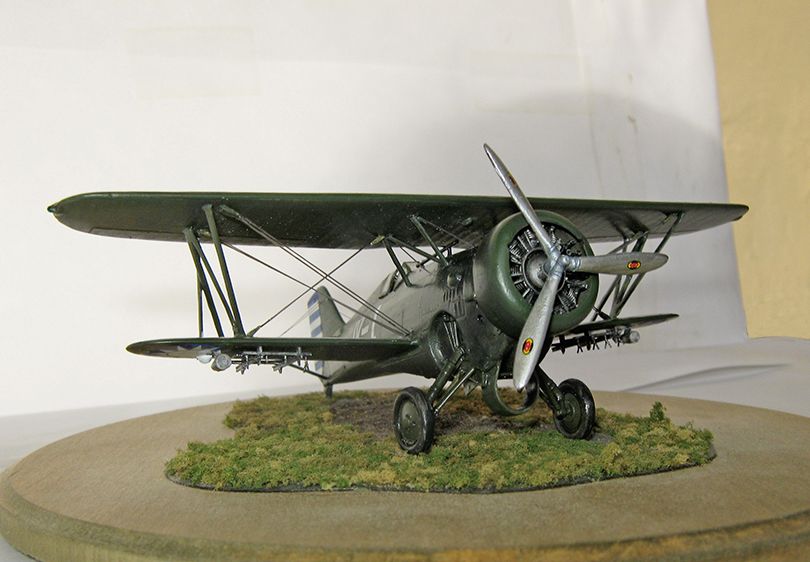
Maj. Kao saw one Japanese bomber under attack by one of his pilots, who was firing at an impossibly long range. Kao closed with the G3M from the port rear, where its port fin blocked the bomber's defensive fire. At point-blank range, Kao shot up the fuselage, and there was no further fire from the Japanese gunners. Kao fired into the port engine of the Japanese plane; the motor stopped, fuel tanks at the wing root caught fire, and the G3M crashed. Maj. Kao engaged a second bomber, again shooting up its port engine, but by now his fuel tanks were empty; he had to break off and make a dead-stick landing. Another Chinese pilot subsequently engaged this plane, and though it was claimed and confirmed as destroyed, its pilot brought it back to land at its base, where it was written off as past repair.
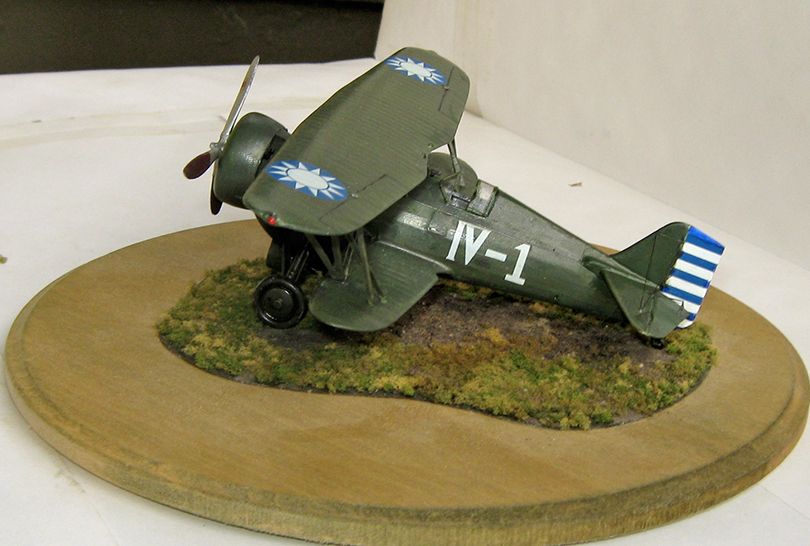
Next day, the seas and wind had moderated sufficiently that the Japanese carriers could put aircraft into the air. The area was still afflicted with low, dense cloud, however. Japanese planes were sighted approaching the 4th Pursuit Group's airfield with just moments to spare. It was a formation of eight Type 91 bombers, big biplanes barely able to break a hundred miles an hour with a full war-load. They were set upon among the thick clouds by some twenty Hawk IIIs. The first one Maj. Kao engaged was, oddly, the only one of the Japanese planes which made it back to its carrier. Kao attacked two more, claiming them shot down in flames. He also was shot from behind shortly after engaging his last target; the bullet went through one arm, through the instrument panel, and damaged his Hawk's motor. Maj. Kao managed to make it back to his airfield and land safely, but he would be in hospital for two months.

This wound likely saved Kao Chi-hang's life, for while he was hospitalized, the new Mitsubishi Type 96 monoplanes came into service with the Japanese Navy. When Maj. Kao returned to his command, matters had greatly changed, and much for the worse. Casualties from the fast Type 96 monoplane fighters in the air, and from Japanese bombs on the ground, were so great that all the Chinese pursuit groups were brigaded together, and even so could muster little more than the original peacetime strength of a single squadron. They had not taken off to engage the Japanese at all for many days. Kao ordered the surviving Hawk IIIs to be stripped of everything extraneous to flying and fighting; racks for bombs and fuel tanks, landing lights, the venturi cowl, and more, were discarded. In this lightened condition the climb, nimbleness, and speed of the Hawk III were appreciably improved.
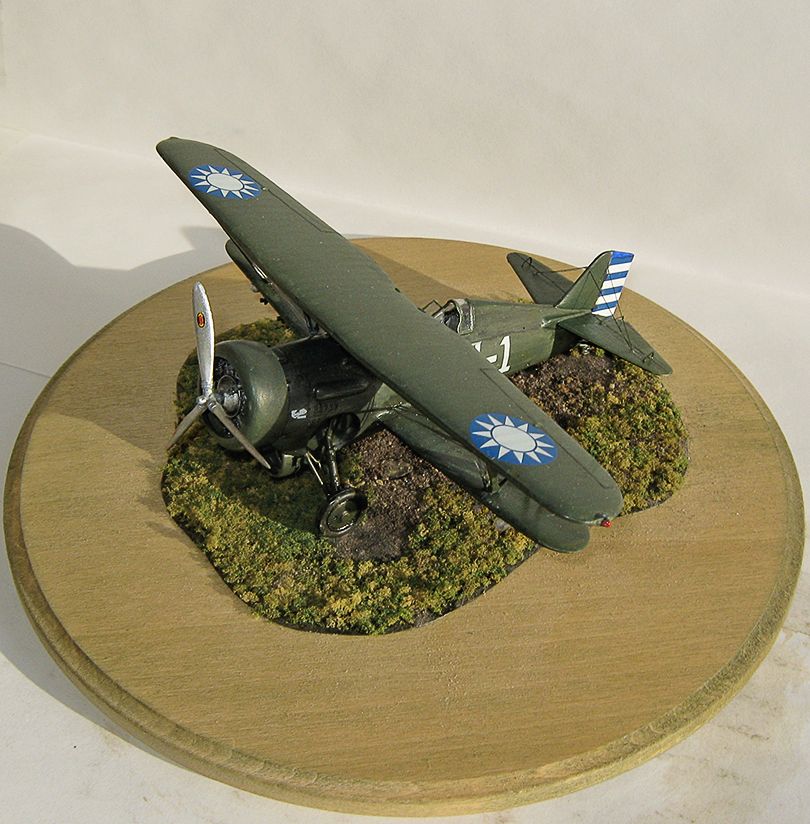
On the afternoon of October 12, nine G3M bombers escorted by Type 96 fighters were reported heading for Nanking. Maj. Kao led every available Chinese fighter to intercept --- five Hawk IIIs, two Boeing Model 281 monoplanes, and one remaining Fiat CR 32. There proved to be eleven of the Type 96 fighters in the escort, and the Chinese fighters never got near the bombers, but rather were engaged in a melee with the Japanese fighters that went on some time.
Maj. Kao attacked a Japanese fighter on the tail of one of his pilots, outmanouvered it and sent it down trailing smoke to crash. He was then engaged by three of the Mitsubishi monoplanes. The experienced Kao Chi-hang managed to keep himself out of his opponent's sights with extreme manouvers, and even got off a few quick bursts himself. Eventually two of the Japanese broke off the fight; the third remained, performing loop after loop. Kao had mortally wounded its pilot, and in dying he had clutched the stick to his belly. The plane eventually came down and was salvaged reasonably intact. Two other Japanese fighters were downed in this engagement, losses which were acknowledged in Japanese records. Only one Chinese fighter, a Hawk III, was brought down, though several took some damage.
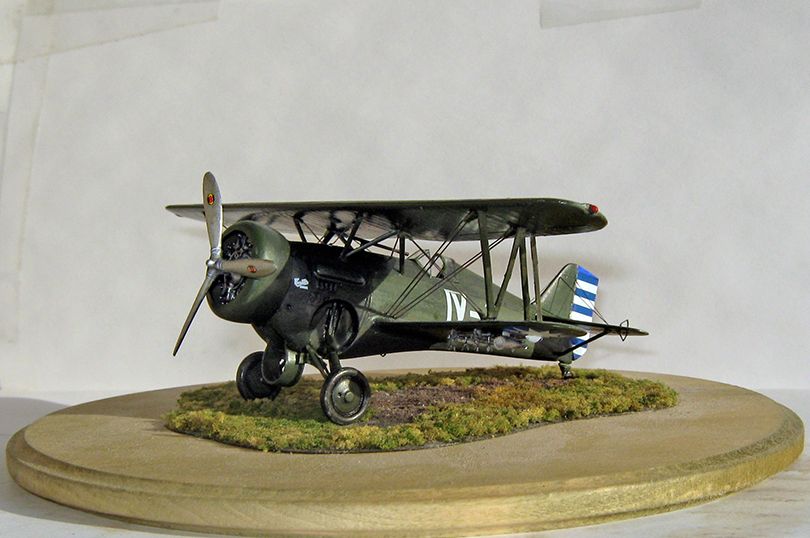
This was about the last hurrah of the original fighter strength of the Chinese air force, however. New equipment was en route from the Soviet Union, some to be flown by Soviet 'volunteers' and some to be issued to Chinese units. Kao Chi-hang in November was promoted to Chief of Fighter Aviation with the rank of Colonel, while retaining command of the 4th Pursuit Group, whose pilots he led north to Lanchow, in far away Kansu Province, where they would receive Polikarpov I-15bis biplanes and I-16tip5 monoplanes. After a short period of familiarization with the new machines, the 4th Pursuit Group began flying back towards Nanking by stages. On 21 November, they landed at Chow Chia Quo to refuel. They weather went bad and take-off was delayed. A force of Japanese G3M bombers appeared overhead nonetheless, and rained down bombs. One struck alongside Col. Kao's I-16 as he and several ground crew were trying to get its balky motor started, and all were killed instantly.